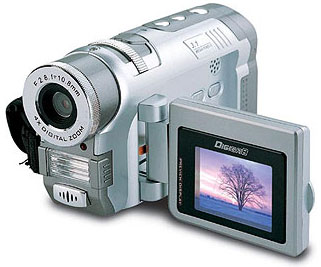



|
"The coming of mechanical sound to the movies constituted the first major technological change in the history of film." (Douglas Gomery) Television eventually became a household fixture that threatened to keep theater-going audiences at home, thus TV became the main competitor and the main reason theater sound companies engineered to create a richer and more immersive theater sound experience that TV could not replicate. |

|
| "The
movies did indeed attain the zenith of their popularity and influence
in the 1930s and 1940s, culminating in 1946, when motion-picture
attendance reached its all-time peak; but at the same time the
industry became more enmeshed in the struggles over power and
purpose in American society than ever before. The form that movie
culture assumed grew out of interrelations with other social and
economic institutions and with the state." (Robert Sklar) |
|
| Definition: Film Gives Way to Video | |
In
a Nutshell: Film is the mother of video. Video is the technology
of electronically capturing, recording, processing, storing, transmitting,
and reconstructing a sequence of still images representing scenes
in motion. Source |
|
| Film encompasses individual motion pictures, the field of film as an art form, and the motion picture industry. Films are made up of a series of individual images called frames. When these images are shown rapidly in succession, a viewer has the illusion that motion is occurring. The viewer cannot see the flickering between frames due to an effect known as persistence of vision, whereby the eye retains a visual image for a fraction of a second after the source has been removed. A common name for film in the United States is movie, while in Europe the term cinema is preferred. Additional terms for the field in general include the big screen, the silver screen, the cinema and the movies. Source |
|
| History of Film & Video...And the Rise of YouTube | |
Video technology was first developed for cathode ray tube television systems, but several new technologies for video display devices have since been invented. Standards for television sets and computer monitors have tended to evolve independently, but advances in computer performance and digital television broadcasting and recording are resulting in a convergence of standards and use of content. Computers can now display television and film-style video clips and streaming media, encouraged by increased processor speed, storage capacity, and broadband access to the Internet. Source YouTube is a video sharing website on which users can upload and share videos. YouTube uses Adobe Flash Video technology to display a wide variety of user-generated video content, including movie clips, TV clips, and music videos, as well as amateur content such as video blogging and short original videos. Most of the content on YouTube has been uploaded by individuals, although media corporations including CBS, the BBC, UMG and other organizations offer some of their material via the site, as part of the YouTube partnership program. |
|
|
|
| Examples of Online Video (YouTube) | |
|
Here
is an example of one of the many music videos on YouTube:
|
|
| The Benefits of Online Video | |
|
|
| The Negatives | |
The Basics of Creating Your Own Video
|
|
| The Basics of Uploading Your Own Video to YouTube | |
|
|
| More Resources | |
Sarah
McNabb - CMNS 545: Communication & Technology - 2010 |





